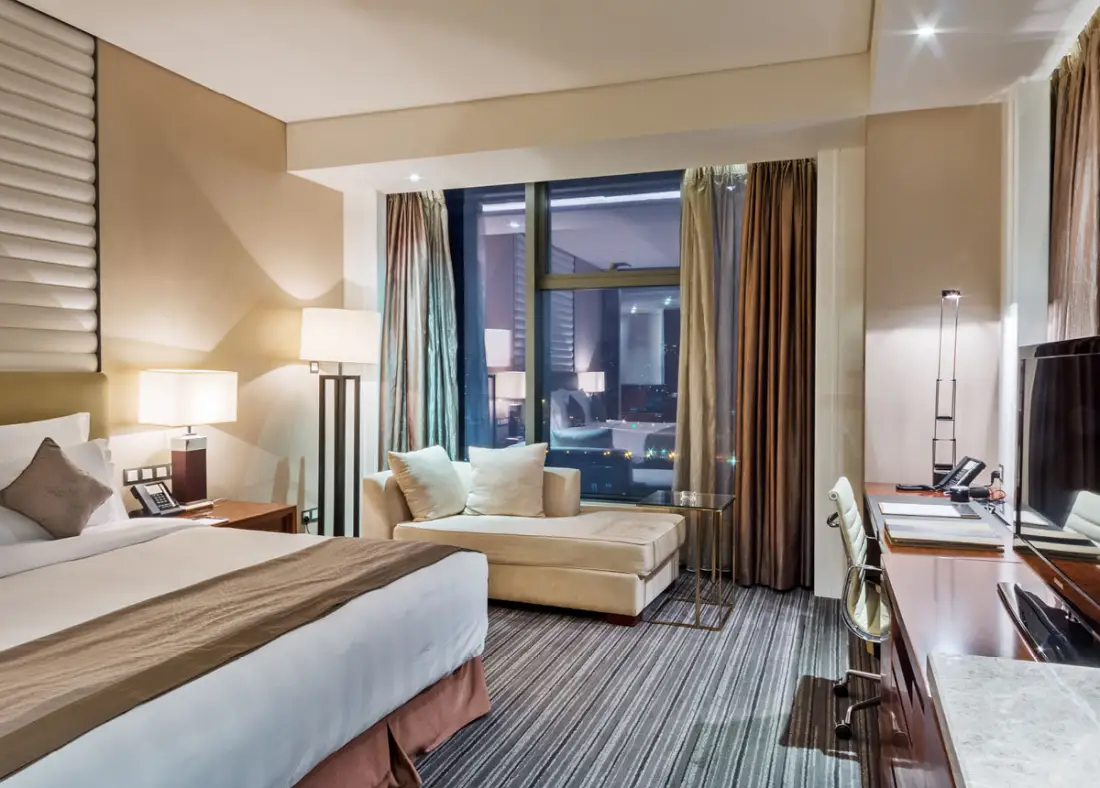Your decarbonisation journey starts here
Discover free tailored tools and resources to help your hotel save money and be more energy efficient.
Rooftop solar with no upfront investment
Sudima's Auckland Airport hotel features solar panels that are owned and managed by a third party, who Sudima pays for its energy use.
This is known as a power purchase agreement (PPA) and can be a good option for businesses that want to benefit from solar without the commitment of capital investment or maintenance responsibilities.
Tools and resources
You’re keen to start decarbonising your hotel business. You know it’ll help you reduce costs, create value, and future-proof your business. But you also might be wondering where to start – don’t worry, we've got you covered.
Simply follow our 5-step pathway below to discover practical tools and resources to help you identify, measure, and lower your emissions. The resources have been designed by industry experts especially for the hotel sector, endorsed by Hospitality New Zealand, and support World Tourism Organisation goals.
Work your way through the steps at your own pace, put the lessons into practice, and start seeing results.
The Hotel Decarbonisation Pathway starts with energy efficiency. The end goal is to move away from fossil fuels, but by first taking steps to improve existing processes, equipment and operations, your transition will be more efficient and more cost effective.
The pathway has been broken down into 5 steps. Each step provides practical information for hoteliers, no matter how far along the decarbonisation journey you are.

Step 1: Increase engagement and awareness
Understanding your emissions impact is a crucial first step. Here you’ll find out where your emissions are coming from, the benefits of reducing them, plus learn from other businesses already on the decarbonisation journey.
Step 2: Measure emissions and set targets
The most important step in energy management and conservation is measuring and accounting for energy consumption. In this section, you’ll learn how to calculate a baseline for your energy use, so you can gauge how your hotel is performing and track progress against future improvements.
Step 3: Optimise equipment and improve processes
Reviewing and adjusting the way your equipment is performing can be a big win for energy reduction, cost reduction, and increased productivity.
Step 4: Reduce energy demand
New technology or upgrades to existing processes can reduce energy demand. It is important to reduce the demand for energy prior to switching fuels, so that the energy demand for renewables is as minimal as possible. This step looks at equipping businesses with the latest international innovations in their space to reduce the demand on energy.
Step 5: Switching to renewable energy
Fuel switching to renewable energy sources is the final step to decarbonising. By following steps 1-4, you'll be in the best position to make an informed decision about fuel switching, in the most cost-effective way.
Case studies
-
Sizzling with electricity
Auckland restaurant East's new electric induction wok is improving energy efficiency and enhancing flavour in the kitchen.
- Case study
- Electricity
- Innovation
-
Rest and recharge: EV charging at accommodation
Kiwi accommodation providers share their experience and advice around offering EV charging for guests.
- Case study
- EV charging
- Smart charging
-
Energy saving mode: Samson Corporation’s journey to net carbon zero building management
Property investment company Samson have transformed Parnell’s Axis building from a chocolate factory to a mixed-use, low emissions space.
- Case study
- Decarbonisation
- Co-funding
Wayfinder
-
Stay up to date as we release new resources
-
Find other support opportunities
-
Browse sector pathways



